Wednesday, March 26, 2014
Abel Prize 2014
Tuesday, March 25, 2014
Narrative and Mathematics
"Richard Hughes’s celebrated short novel is
a masterpiece of concentrated narrative."
— New York Review of Books on
A High Wind in Jamaica
As perhaps were, in their way, parts of the life
of the late Patrice Wymore Flynn, who reportedly
died at 87 on Saturday.
Deep backstory: See Colony of Santiago (Jamaica).
For the "mathematics" part of this post's title, see
Saturday's Log24 post on Kummer-surface terms
and a post of September 23, 2012.
Sunday, March 23, 2014
Memorial Word
In memory of a Spanish statesman
who died today at 81… Santiago.
Saturday, March 22, 2014
Two Types of Symmetry
Friday, March 21, 2014
Three Constructions of the Miracle Octad Generator
See also a Log24 post on this subject from Dec. 14, 2013,
especially (scroll down) the update of March 9, 2014.
Related material on the Turyn-Curtis construction
from the University of Cambridge —

— Slide by "Dr. Parker" — Apparently Richard A. Parker —
Lecture 4, "Discovering M24," in slides for lectures 1-8 from lectures
at Cambridge in 2010-2011 on "Sporadic and Related Groups."
See also the Parker lectures of 2012-2013 on the same topic.
A third construction of Curtis's 35 4×6 1976 MOG arrays would use
Cullinane's analysis of the 4×4 subarrays' affine and projective structure,
and point out the fact that Conwell's 1910 correspondence of the 35
4+4-partitions of an 8-set with the 35 lines of the projective 3-space
over the 2-element field, PG(3, 2), is essentially the same correspondence
as that constituting Curtis's 1976 MOG.
See The Diamond Theorem, Finite Relativity, Galois Space,
Generating the Octad Generator, and The Klein Correspondence.
Update of March 22-March 23 —
Adding together as (0,1)-matrices over GF(2) the black parts (black
squares as 1's, all other squares as 0's) of the 35 4×6 arrays of the 1976
Curtis MOG would then reveal* the symmetric role played in octads
by what Curtis called the heavy brick , and so reveal also the action of
S3 on the three Curtis bricks that leaves invariant the set of all 759
octads of the S(5, 8, 24) constructed from the 35 MOG arrays. For more
details of this "by-hand" construction, see Geometry of the 4×4 Square.
For the mathematical properties of the S(5, 8, 24), it is convenient to
have a separate construction (such as Turyn's), not by hand, of the
extended binary Golay code. See the Brouwer preprint quoted above.
* "Then a miracle occurs," as in the classic 1977 Sidney Harris cartoon.
Illustration of array addition from March 23 —
Thursday, March 20, 2014
Classical Galois
Wednesday, March 19, 2014
To Gather Stones Together
“Behold the handmaid of the Lord.”
“I’m alive.”
“No. You’re dead, this is heaven,
and I’m the Virgin Mary.”
(Costume design by L’Wren Scott)
Tuesday, March 18, 2014
Class of 64 continues…
Mathematician Norbert Wiener reportedly died on this date in 1964.
"Mathematics is too arduous and uninviting a field to appeal to those to whom it does not give great rewards. These rewards are of exactly the same character as those of the artist. To see a difficult uncompromising material take living shape and meaning is to be Pygmalion, whether the material is stone or hard, stonelike logic. To see meaning and understanding come where there has been no meaning and no understanding is to share the work of a demiurge. No amount of technical correctness and no amount of labour can replace this creative moment, whether in the life of a mathematician or of a painter or musician. Bound up with it is a judgment of values, quite parallel to the judgment of values that belongs to the painter or the musician. Neither the artist nor the mathematician may be able to tell you what constitutes the difference between a significant piece of work and an inflated trifle; but if he is not able to recognise this in his own heart, he is no artist and no mathematician."
— Wiener, Ex-Prodigy
Oye Como Va
Monday, March 17, 2014
Collection
"It is a very fun happy collection
and I think it is
classic and timeless and elegant."
— The late L'Wren Scott,
Vanity Fair , Nov. 20, 2013
Update of 10:30 PM ET —
"I don't want Santana Abraxas!"
Mellon Posts

Related material: Posts tagged Mellon in this journal, which include
remarks by Jim Holt on "The Devil's Bible" and "Big-Bang Theology."
See as well the New York Times front page from 1:01 PM ET today.
Narratives
Or: The Confessions of Nat Tate
“A convincing lie is, in its own way, a tiny, perfect narrative.”
— William Boyd, “A Short History of the Short Story” (2006)
“A novel written in the first-person singular has certain powerful
narrative advantages, especially when it takes the form of a ‘confession.'”
— William Boyd, “Memoir of a Plagiarist” (1994)
From a Log24 post yesterday —
For Little Man Tate —

Related material — Wechsler in this journal and an earlier Siri Hustvedt
art novel, from 2003 —
Mark and Lucille, Bill and Violet, Al and Regina, etc., etc., etc. —

Her
“The name Siri is Norwegian, meaning
‘beautiful woman who leads you to victory.'”
I prefer Josefine.
Sunday, March 16, 2014
Old Jew
Blockheads continues
Red to Green continues
The New Yorker of March 17 on
a New York literary family—
“First they were Communists, then liberals
(he was questioned by the House Committee
on Un-American Activities);
always they were avid party-givers.”
“Gatsby believed in the green light… ”
— F. Scott Fitzgerald
“Why did the Pole spend all night outside the whorehouse?
He was waiting for the red light to turn green.”
— Blanche Knott, Truly Tasteless Jokes
Mira Sorvino in a TV version of The Great Gatsby —
“Are you my one o’clock?” — Adapted from Mighty Aphrodite
See as well Green Hunt.
Saturday, March 15, 2014
Red to Green
Part I: The New Yorker
Passages from The New Yorker issue dated March 17, 2014—
"Both autism and psychopathy entail a lack of empathy. Psychologists, though, distinguish between the 'cognitive empathy' deficits of autism (difficulty understanding what emotions are, trouble interpreting other people’s nonverbal signs) and the 'emotional empathy' deficits of psychopathy (lack of concern about hurting other people, an inability to share their feelings). The subgroup of people with neither kind of empathy appears to be small, but such people may act out their malice in ways that can feel both guileless and brutal." — "The Reckoning," by Andrew Solomon
"The question of what constitutes a story is troublesome." — "Long Story Short," by Dana Goodyear
Part II: The New York Times

Part III: Log24
Obiter Dicta
"I am haunted by humans."
(Search for the source at Google.)
"Art worldlings are one thing, Hollywood another."
(Search for the source at Log24.)
These quotations were suggested by two obits this morning:

Friday, March 14, 2014
The Search for Charles Wallace
The search in the previous post for the source of a quotation from Poincaré yielded, as a serendipitous benefit, information on an interesting psychoanalyst named Wilfred Bion (see the Poincaré quotation at a webpage on Bion). This in turn suggested a search for the source of the name of author Madeleine L'Engle's son Bion, who may have partly inspired L'Engle's fictional character Charles Wallace. Cynthia Zarin wrote about Bion in The New Yorker of April 12, 2004 that
"According to the family, he is the person for whom L’Engle’s insistence on blurring fiction and reality had the most disastrous consequences."
Also from that article, material related to the name Bion and to what this journal has called "the Crosswicks Curse"*—
"Madeleine L’Engle Camp was born in 1918 in New York City, the only child of Madeleine Hall Barnett, of Jacksonville, Florida, and Charles Wadsworth Camp, a Princeton man and First World War veteran, whose family had a big country place in New Jersey, called Crosswicks. In Jacksonville society, the Barnett family was legendary: Madeleine’s grandfather, Bion Barnett, the chairman of the board of Jacksonville’s Barnett Bank, had run off with a woman to the South of France, leaving behind a note on the mantel. Her grandmother, Caroline Hallows L’Engle, never recovered from the blow. ….
… The summer after Hugh and Madeleine were married, they bought a dilapidated farmhouse in Goshen, in northwest Connecticut. Josephine, born in 1947, was three years old when they moved permanently to the house, which they called Crosswicks. Bion was born just over a year later."
* "There is such a thing as a tesseract."
Thursday, March 13, 2014
Entartete Kunst
The title refers to a New York Times story about
an art exhibition that opened today.
This evening’s NY Lottery numbers: 016 and 2858.
Pictures from these links:
016 (Blackboard Jungle , 1955) —

2858 (number of a Log24 post, 2007) —
Story
A Presbyterian meditation —

A scene from the film of the above book —

“Looking carefully at Golay’s code is like staring into the sun.”
For more of the story, see Golay in this journal.
Completing the Supersquare
Presbyterian elder Reubin Askew was called “Jesus Christ Supersquare”
after completing his first year as governor of Florida—

Now Askew has completed his life.
See also other instances of “Super” in this journal.
Update of 10:30 AM March 13 —
For those who like puzzles, here is yet another
instance of “Super,” this one related to the pattern
in last evening’s post Obiter Dictum —
Wednesday, March 12, 2014
Obiter Dictum
The title is both a legal phrase and a phrase
used by Tom Wolfe in his writings on art.
See, too, the pattern of nine triangular half-squares
arranged in a 3×3 square used in the logo of the
Jean Stephen art galleries in Minneapolis…

… and in a print at the Tate in London (click to enlarge)—
See as well an obit of the print’s artist, Justin Knowles, who reportedly died
on Feb. 24, 2004.
Some instances of that date in this journal are related to Knowles’s aesthetics.
Art Wars
Frederick Hart’s 1982 sculpture “Ex Nihilo” for Washington’s National Cathedral—

Related material — Tom Wolfe on Frederick Hart, said to have been
published in The New York Times Magazine of Sunday, Jan. 2, 2000—
| In 1982, Ex Nihilo was unveiled in a dedication ceremony. The next day, Hart scanned the newspapers for reviews… The Washington Post… The New York Times… nothing… nothing the next day, either… nor the next week… nor the week after that. The one mention of any sort was an obiter dictum in The Post ‘s Style (read: Women’s) section indicating that the west facade of the cathedral now had some new but earnestly traditional (read: old-fashioned) decoration. So Hart started monitoring the art magazines. Months went by… nothing. It reached the point that he began yearning for a single paragraph by an art critic who would say how much he loathed Ex Nihilo… anything, anything at all!… to prove there was someone out there in the art world who in some way, however slightly or rudely, cared.
The truth was, no one did, not in the least. Ex Nihilo never got ex nihilo simply because art worldlings refused to see it. |
Art worldings are one thing, Hollywood another.
Al Pacino’s moving wall sculpture in “The Devil’s Advocate” (1997)—

“After the film’s initial release, sculptor Frederick Hart sued Warner Bros.
claiming that a large sculpture prominently featured in the film
(on the wall of Al Pacino’s penthouse apartment) is an unauthorized copy
of his work ‘Ex Nihilo,’ displayed at the entrance of Washington’s Episcopal
National Cathedral.” — IMDb
Tuesday, March 11, 2014
Dark Fields of the Republic
This post was suggested by today's previous post, Depth,
by Plato's Diamond, and by Rebecca Newberger Goldstein's
recent fanciful fiction about Plato.
Plato, Republic , Book II, Paul Shorey translation at Perseus—
“Consider,” [382a] said I; “would a god wish to deceive, or lie, by presenting in either word or action what is only appearance?” “I don’t know,” said he. “Don’t you know,” said I, “that the veritable lie, if the expression is permissible, is a thing that all gods and men abhor?” “What do you mean?” he said. “This,” said I, “that falsehood in the most vital part of themselves, and about their most vital concerns, is something that no one willingly accepts, but it is there above all that everyone fears it.” “I don’t understand yet either.” “That is because you suspect me of some grand meaning,” [382b] I said; “but what I mean is, that deception in the soul about realities, to have been deceived and to be blindly ignorant and to have and hold the falsehood there, is what all men would least of all accept, and it is in that case that they loathe it most of all.” “Quite so,” he said.
Related material —
A meditation from the Feast of St. Francis, 2012 —
A post from Sept. 30, 2012, the reported date of death
for British children's author Helen Nicoll —
The New Criterion on the death of Hilton Kramer —
This uncredited translation of Plato is, Google Books tells us,
by "Francis MacDonald Cornfield." The name is an error,
but the error is illuminating —
Depth
"… this notion of ‘depth’ is an elusive one
even for a mathematician who can recognize it…."
— G. H. Hardy, A Mathematician's Apology
Part I: An Inch Deep

Part II: An Inch Wide
See a search for "square inch space" in this journal.
See also recent posts with the tag depth.
Monday, March 10, 2014
Strategic Hamlets
From an obituary for a Kennedy advisor
who reportedly died at 94 on February 23, 2014*—
“He favored withdrawing rural civilians
into what he called ‘strategic hamlets’
and spraying defoliants to cut off
the enemy’s food supply.”
Other rhetoric: Hamlet and Infinite Space in this journal,
as well as King of Infinite Space , Part I and Part II.
These “King” links, to remarks on Coxeter and Saniga ,
are about two human beings to whom Hamlet’s
phrase “king of infinite space” has been applied.
The phrase would, of course, be more accurately
applied to God.
* The date of the ‘God’s Architecture’ sermon
at Princeton discussed in this afternoon’s post.
God’s Architecture
Part I:
The sermon, “God’s Architecture,” at Nassau Presbyterian
Church in Princeton on Sunday, Feb. 23, 2014. (This is the
“sermon” link in last Sunday’s 11 AM ET Log24 post.)
An excerpt:
“I wonder what God sees when God looks at our church.
Bear with me here because I’d like to do a little architectural
redesign. I look up at our sanctuary ceiling and I see buttons.
In those large round lights, I see buttons. I wonder what would
happen if we unbutton the ceiling, Then I wonder if we were to
unzip the ceiling, pull back the rooftop, and God were to look in
from above – What does God see? What pattern, what design,
what shape takes place?” — Rev. Lauren J. McFeaters
Related material — All About Eve:
A. The Adam and Eve sketch from the March 8 “Saturday Night Live”
B. “Katniss, get away from that tree!” —
C. Deconstructing God in last evening’s online New York Times .
Part II:
“Heavensbee!” in the above video, as well as Cartier’s Groundhog Day
and Say It With Flowers.
Part III:
Humans’ architecture, as described (for instance) by architecture
theorist Anne Tyng, who reportedly died at 91 on Dec. 27, 2011.
See as well Past Tense and a post from the date of Tyng’s death.
Sunday, March 9, 2014
The Story Creeps Up
For Women’s History Month —
Conclusion of “The Storyteller,” a story
by Cynthia Zarin about author Madeleine L’Engle—

See also the exercise on the Miracle Octad Generator (MOG) at the end of
the previous post, and remarks on the MOG by Emily Jennings (non -fiction)
on All Saints’ Day, 2012 (the date the L’Engle quote was posted here).
Hesse’s Table
From “Quartic Curves and Their Bitangents,” by
Daniel Plaumann, Bernd Sturmfels, and Cynthia Vinzant,
arXiv:1008.4104v2 [math.AG] 10 Jan 2011 —

The table mentioned (from 1855) is…
Exercise: Discuss the relationship, if any, to
the Miracle Octad Generator of R. T. Curtis.
At Play in the Fields of Brazil
From Facebook, a photo from the Feast of St. Francis, 2013:
Neantro Saavedra-Rivano, author of the 1976 paper “Finite
Geometries in the Theory of Theta Characteristics,” in Brasilia—
On the same date, art from Inception and from Diamonds Studio
in Brazil —
Sermon
On Theta Characteristics

— From Zentralblatt-math.org. 8 PM ET update: See also a related search.

Some may prefer a more politically correct— and simpler— sermon.
Background for the simpler sermon: Quilt Geometry.
Saturday, March 8, 2014
Women’s History Month
For the Princeton Class of 1905 —
Joyce Carol Oates Meets Emily Dickinson.
Oates —
"It is an afternoon in autumn, near dusk.
The western sky is a spider’s web of translucent gold.
I am being brought by carriage—two horses—
muted thunder of their hooves—
along narrow country roads between hilly fields
touched with the sun’s slanted rays,
to the village of Princeton, New Jersey.
The urgent pace of the horses has a dreamlike air,
like the rocking motion of the carriage;
and whoever is driving the horses
his face I cannot see, only his back—
stiff, straight, in a tight-fitting dark coat."
Dickinson —
"Because I could not stop for Death—
He kindly stopped for me—
The Carriage held but just Ourselves—
And Immortality."
Conwell Heptads in Eastern Europe
“Charting the Real Four-Qubit Pauli Group
via Ovoids of a Hyperbolic Quadric of PG(7,2),”
by Metod Saniga, Péter Lévay and Petr Pracna,
arXiv:1202.2973v2 [math-ph] 26 Jun 2012 —
P. 4— “It was found that Q +(5,2) (the Klein quadric)
has, up to isomorphism, a unique one — also known,
after its discoverer, as a Conwell heptad [18].
The set of 28 points lying off Q +(5,2) comprises
eight such heptads, any two having exactly one
point in common.”
P. 11— “This split reminds us of a similar split of
63 points of PG(5,2) into 35/28 points lying on/off
a Klein quadric Q +(5,2).”
[18] G. M. Conwell, Ann. Math. 11 (1910) 60–76
A similar split occurs in yesterday’s Kummer Varieties post.
See the 63 = 28 + 35 vectors of R8 discussed there.
For more about Conwell heptads, see The Klein Correspondence,
Penrose Space-Time, and a Finite Model.
For my own remarks on the date of the above arXiv paper
by Saniga et. al., click on the image below —
Walter Gropius
Friday, March 7, 2014
Field Dream
A field in China —

The following link was suggested by today’s previous post
and by the ABC TV series “Resurrection” scheduled to start
at 9 PM ET Sunday, March 9, 2014 —
Kummer Varieties
The Dream of the Expanded Field continues…
From Klein's 1893 Lectures on Mathematics —

"The varieties introduced by Wirtinger may be called Kummer varieties…."
— E. Spanier, 1956
From this journal on March 10, 2013 —
From a recent paper on Kummer varieties,
arXiv:1208.1229v3 [math.AG] 12 Jun 2013,
"The Universal Kummer Threefold," by
Qingchun Ren, Steven V Sam, Gus Schrader, and Bernd Sturmfels —

Two such considerations —
Update of 10 PM ET March 7, 2014 —
The following slides by one of the "Kummer Threefold" authors give
some background related to the above 64-point vector space and
to the Weyl group of type E7, W (E7):
The Cayley reference is to "Algorithm for the characteristics of the
triple ϑ-functions," Journal für die Reine und Angewandte
Mathematik 87 (1879): 165-169. <http://eudml.org/doc/148412>.
To read this in the context of Cayley's other work, see pp. 441-445
of Volume 10 of his Collected Mathematical Papers .
Thursday, March 6, 2014
ART WARS (continued)
The Old Well*
See posts tagged The Well.

Related material: Artist Joseph Kosuth, who pictured
the dictionary definition of "nothing" shown in the index of
today's LA Times obituaries, and a Chinese film director,
one of those portrayed in that index.
Also mentioned on the obituaries index page —
See as well The Church of the Holy Hubcap.
* Film title, translation of Chinese: 老井; pinyin: lǎo jǐng.
Wednesday, March 5, 2014
Rosenhain and Göpel Again
See also Rosenhain and Göpel in the Wikipedia
article Kummer surface, and in this journal.
Related material: user @hyperelliptic on Twitter.
The Good Earth
Holy Hub Caps
Review of Joseph Campbell's The Inner Reaches of Outer Space—

The reviewer compares Campbell to "one of those guys who
builds his own church out of hub caps."
A simple hub cap — see ninefold in this journal.
Tuesday, March 4, 2014
Simplify
“Alles wird viel einfacher, wenn man zuerst von der
Unendlichkeit der Theilbarkeit abstrahirt und bloss
Discrete Grössen betrachtet.”
— Carl Friedrich Gauss in 1825
(Quoted here in the July 16, 2013, post Child Buyers.)
The Ten
The Crimson Passion…
Speedtalk
"… in Speedtalk it was… difficult not to be logical."
— Robert A. Heinlein in Gulf
Related material: ABC TV at 9 PM ET
on Sunday, March 9, 2014… 3/09.
See also page 309 in the previous post, Outside the Box.
Shades of Plan 9.
Monday, March 3, 2014
Blackboard Jungle Revisited

Blackboard Jungle , 1955
"We are going to keep doing this
until we get it right." — June 15, 2007
"Her wall is filled with pictures,
she gets 'em one by one" — Chuck Berry
See too a more advanced geometry lesson
that also uses the diagram pictured above.
Sunday, March 2, 2014
Square Dance
|
And no fact of Alain Resnais’s life seemed to strike a stranger note than his assertion that the films which first inspired his ambition to become a film director were those in which Fred Astaire and Ginger Rogers danced. Or was it Dick Powell and Ruby Keeler? He could never be sure. “I wondered if I could find the equivalent of that exhilaration,” he recalled. If he never did it was perhaps because of his highly cultivated attitude to serious cinema. His character and temperament were more attuned to the theory of film and a kind of intellectual square dance* which was far harder to bring to the screen with “exhilaration” than the art of Astaire and Rogers. *See today's 11 AM ET Sermon. |
Plato Thanks the Academy…
… With a trip to yesteryear suggested by
the Feb. 28 New York Times article
"Casting Shadows on a Fanciful World"
("Wes Anderson Evokes Nostalgia in
'The Grand Budapest Hotel' ").
Sermon
Raiders of the Lost (Continued)
"Socrates: They say that the soul of man is immortal…."
From August 16, 2012—
In the geometry of Plato illustrated below,
"the figure of eight [square] feet" is not , at this point
in the dialogue, the diamond in Jowett's picture.
An 1892 figure by Jowett illustrating Plato's Meno—
A more correct version, from hermes-press.com —
|
Socrates: He only guesses that because the square is double, the line is double.Meno: True.
Socrates: Observe him while he recalls the steps in regular order. (To the Boy.) Tell me, boy, do you assert that a double space comes from a double line? Remember that I am not speaking of an oblong, but of a figure equal every way, and twice the size of this-that is to say of eight feet; and I want to know whether you still say that a double square comes from double line? [Boy] Yes. Socrates: But does not this line (AB) become doubled if we add another such line here (BJ is added)? [Boy] Certainly.
Socrates: And four such lines [AJ, JK, KL, LA] will make a space containing eight feet? [Boy] Yes. Socrates: Let us draw such a figure: (adding DL, LK, and JK). Would you not say that this is the figure of eight feet? [Boy] Yes. Socrates: And are there not these four squares in the figure, each of which is equal to the figure of four feet? (Socrates draws in CM and CN) [Boy] True. Socrates: And is not that four times four? [Boy] Certainly. Socrates: And four times is not double? [Boy] No, indeed. Socrates: But how much? [Boy] Four times as much. Socrates: Therefore the double line, boy, has given a space, not twice, but four times as much. [Boy] True. Socrates: Four times four are sixteen— are they not? [Boy] Yes. |
As noted in the 2012 post, the diagram of greater interest is
Jowett's incorrect version rather than the more correct version
shown above. This is because the 1892 version inadvertently
illustrates a tesseract:
A 4×4 square version, by Coxeter in 1950, of a tesseract—
This square version we may call the Galois tesseract.
Saturday, March 1, 2014
HaShem

From New World Encyclopedia —

See also Tetragrammaton in this journal.
For further context, see Solomon's Cube and Oct. 16, 2013.
Friday, February 28, 2014
Score
"Once a verbal structure is read, and reread
often enough to be possessed, it 'freezes.'
It turns into a unity in which all parts exist at
once, without regard to the specific movement
of the narrative. We may compare it to the study
of a music score, where we can turn to any
part without regard to sequential performance."
— Northrop Frye in The Great Code
Gardner reportedly died at 65 on February 19.
A post linked to here on that date suggests some
musical remarks.
Code
|
From Northrop Frye's The Great Code: The Bible and Literature , Ch. 3: Metaphor I — "In the preceding chapter we considered words in sequence, where they form narratives and provide the basis for a literary theory of myth. Reading words in sequence, however, is the first of two critical operations. Once a verbal structure is read, and reread often enough to be possessed, it 'freezes.' It turns into a unity in which all parts exist at once, without regard to the specific movement of the narrative. We may compare it to the study of a music score, where we can turn to any part without regard to sequential performance. The term 'structure,' which we have used so often, is a metaphor from architecture, and may be misleading when we are speaking of narrative, which is not a simultaneous structure but a movement in time. The term 'structure' comes into its proper context in the second stage, which is where all discussion of 'spatial form' and kindred critical topics take their origin." |
Related material:
|
"The Great Code does not end with a triumphant conclusion or the apocalypse that readers may feel is owed them or even with a clear summary of Frye’s position, but instead trails off with a series of verbal winks and nudges. This is not so great a fault as it would be in another book, because long before this it has been obvious that the forward motion of Frye’s exposition was illusory, and that in fact the book was devoted to a constant re-examination of the same basic data from various closely related perspectives: in short, the method of the kaleidoscope. Each shake of the machine produces a new symmetry, each symmetry as beautiful as the last, and none of them in any sense exclusive of the others. And there is always room for one more shake."
— Charles Wheeler, "Professor Frye and the Bible," South Atlantic Quarterly 82 (Spring 1983), pp. 154-164, reprinted in a collection of reviews of the book. |
For code in a different sense, but related to the first passage above,
see Diamond Theory Roullete, a webpage by Radamés Ajna.
For "the method of the kaleidoscope" mentioned in the second
passage above, see both the Ajna page and a webpage of my own,
Kaleidoscope Puzzle.
Thursday, February 27, 2014
The Crosswicks Curse
"There is such a thing as a tesseract."
— Saying from Crosswicks
See also March 5, 2011.
Adapted from the above passage —
"So did L'Engle understand four-dimensional geometry?"
Secular Space
This morning's previous post, on sacred space,
linked to "Positively White Cube Revisited,"
an article by one Simon Sheikh.
Sheikh writes well, but he seems to be a disciple
of the damned Marxist lunatic Louis Althusser.
As Pynchon put it in Gravity's Rainbow ,
"For every kind of vampire, there is a kind of cross."
In this case, a video starring Sheikh on the exhibition "All That Fits"
suggests, by its filming date (May 27, 2011), a Maltese cross.
"The stuff that dreams are made of." — Bogart
(See also Oct. 25, 2012.)
Sacred Space, continued
"An image comes to mind of a white, ideal space
that, more than any single picture, may be the
archetypal image of 20th-century art."
— Brian O'Doherty, "Inside the White Cube"
Cube spaces exist also in mathematics.
Wednesday, February 26, 2014
Cubist Aesthetics…
in Stevens' "The Man with the Blue Guitar"
| Author: | Ruszkowska-Buchowska, Dominika |
| Publication: |
Studia Anglica Posnaniensia: An International Review of English Studies |
| Article Type: | Critical essay |
| Date: | Jan 1, 2004 |
See also Blue Guitar
and Cubist Language Game
as well as Dali Cube.
Blue Guitar
The online New York TImes this morning —
|
Paco de Lucia, Renowned Flamenco Guitarist, Dies at 66 By REUTERS FEB. 26, 2014, 8:30 A.M. E.S.T. MADRID — Paco de Lucia, the influential Spanish guitarist who vastly expanded the international audience for flamenco and merged it with other musical styles, died suddenly on Wednesday** of a heart attack in Mexico. The 66-year-old virtuoso, as happy playing seemingly impossible syncopated flamenco rhythms as he was improvising jazz or classical guitar, helped to legitimize flamenco in Spain itself at a time when it was shunned by the mainstream. |
Related material linked to here at midnight Monday-Tuesday —
Unrelated material, suggested merely by the upload dates of
two guitar videos* — See Oct. 25, 2008, and Oct. 26, 2011.
* El Toro – Malagueña (guitarist: Canabarro) and Light and Shade
(guitarist: de Lucia).
** Update of 12:26 PM ET — Other reports now say de Lucia died
not today, Wednesday, Feb. 26, but rather on Tuesday, Feb. 25.
Tuesday, February 25, 2014
The Argument
The title of a review of Charles Taylor's book A Secular Age
was quoted here at noon last Saturday —
"The Place of the Sacred
in the Absence of God."
My comment from last Saturday —
"The place of the sacred is not, perhaps,
Davos, but a more abstract location."
A sequel —
"Religious Experience and the Modern Self,"
by Ross Douthat in The New York Times
today at 4:25 PM ET —
"The argument comes from the Canadian
philosopher Charles Taylor and his
doorstop-thick magnum opus A Secular Age …."
Related material:
Ten is a Hen
Followers

I do not follow the Public Library of Science (PLOS), although,
as shown above, I do follow some of the followers.
This post was suggested by Amy Hubbard's recent reference
to a PLOS article on beliefs in Hell.
Pop culture seems more informative. Readers of the PLOS article
should also know about the Dakota, John Lennon, and Rosemary's
Baby, as well as Woody Allen, The Ninth Gate , and Plan 9 from
Outer Space.
Singing Contest
"What a lovely singing voice you must have."
— Bill Murray in Ghostbusters (1984)
Contestant One: Ruth Margraff
Contestant Two: Sandra Sangiao
Monday, February 24, 2014
Second City
See Stadium Devildare, Church Notes, and Ruth Margraff*.
Ruthless : A Brief Drama —
"There is no ____ , there is only Zuul."
— Adapted from Ghostbusters
* In a webpage dated July 25, 2007.
See also this journal on that date.
Devildare
Katy Perry in her new "Dark Horse" video—
"So you wanna play with magic.
Boy you should know what you're fallin' for.
Baby do you dare to do this?"
Bill Murray in Ghostbusters —
Dr. Spengler’s Experiment
Sunday, February 23, 2014
Or Only Die
Serge Lang, Collected Papers, Vol. 4 , p. 179—
"I find it appropriate to quote here a historical
comment made by Halberstam…."
This is Heini Halberstam, who reportedly died
on January 25, 2014.
I find it appropriate to quote here an unhistorical
comment made by a fictional character —
“The test?” I faltered, staring at the thing.
“Yes, to determine whether you can live
in the fourth dimension or only die in it.”
— From Fritz Leiber's classic story
"Damnation Morning"
The Leiber quote was suggested by the posts
in this journal on the day of Halberstam's death.
Sunday School
Lang to Langlands
|
Lang — “Elliptic functions parametrize elliptic curves, and the intermingling of the analytic and algebraic-arithmetic theory has been at the center of mathematics since the early part of the nineteenth century.” — Serge Lang, preface to Elliptic Functions (second edition, 1987) Langlands — “The theory of modular functions and modular forms, defined on the upper half-plane H and subject to appropriate tranformation laws with respect to the group Gamma = SL(2, Z) of fractional linear transformations, is closely related to the theory of elliptic curves, because the family of all isomorphism classes of elliptic curves over C can be parametrized by the quotient Gamma\H. This is an important, although formal, relation that assures that this and related quotients have a natural structure as algebraic curves X over Q. The relation between these curves and elliptic curves predicted by the Taniyama-Weil conjecture is, on the other hand, far from formal.” — Robert P. Langlands, review of Elliptic Curves , by Anthony W. Knapp. (The review appeared in Bulletin of the American Mathematical Society , January 1994.) |
Saturday, February 22, 2014
Green Fields
Some narrative notes in memory of a
Bowling Green State University math professor
who reportedly died at 72 on Feb. 13—
That date in this journal and Green Fields.
See also Nine is a Vine.
Those who prefer mathematics to narrative may
also prefer to read, instead of the notes above,
some material on the dead professor's specialty,
Diophantine equations. Recommended:
Mordell on Lang and Lang on Mordell as well as
Lang's article titled
"Mordell's Review, Siegel's Letter to Mordell,
Diophantine Geometry, and 20th Century Mathematics."
Some background —
Grundlagenkrise*
The title was suggested by a 1921 article
by Hermann Weyl and by a review* of
a more recent publication —
The above Harvard Gazette piece on Davos is
from St. Ursula’s Day, 2010. See also this journal
on that date.
See as well a Log24 search for Davos.
A more interesting piece by Peter E. Gordon
(author of the above Davos book) is his review
of Charles Taylor’s A Secular Age .
The review is titled
“The Place of the Sacred
in the Absence of God.”
(The place of the sacred is not, perhaps, Davos,
but a more abstract location.)
* Grundlagenkrise was a tag for a Jan. 13, 2011,
review in The New Republic of Gordon’s
book on Cassirer and Heidegger at Davos.
Friday, February 21, 2014
Raumproblem*
Despite the blocking of Doodles on my Google Search
screen, some messages get through.
Today, for instance —
"Your idea just might change the world.
Enter Google Science Fair 2014"
Clicking the link yields a page with the following image—

Clearly there is a problem here analogous to
the square-triangle coordinatization problem,
but with the 4×6 rectangle of the R. T. Curtis
Miracle Octad Generator playing the role of
the square.
I once studied this 24-triangle-hexagon
coordinatization problem, but was unable to
obtain any results of interest. Perhaps
someone else will have better luck.
* For a rather different use of this word,
see Hermann Weyl in the Stanford
Encyclopedia of Philosophy.
Night’s Hymn of the Rock
One way of interpreting the symbol ![]()
at the end of yesterday's post is via
the phrase "necessary possibility."
See that phrase in (for instance) a post
of July 24, 2013, The Broken Tablet .
The Tablet post may be viewed in light
of a Tom Wolfe passage quoted here on
the preceding day, July 23, 2013—

On that day (July 23) another weblog had
a post titled
Wallace Stevens: Night's Hymn of the Rock.
Some related narrative —
I prefer the following narrative —
Part I: Stevens's verse from "The Rock" (1954) —
"That in which space itself is contained"
Part II: Mystery Box III: Inside, Outside (2014)
Thursday, February 20, 2014
Relativity Blues
A review of this date in 2005 —
Modal Theology
“We symbolize logical necessity
with the box (![]() )
)
and logical possibility
with the diamond (![]() ).”
).”
— Keith Allen Korcz
And what do we
symbolize by ![]() ?
?
Wednesday, February 19, 2014
The Bitter Beginning
See also a related brick wall.
Some context: Small World (July 12, 2004)
and Moss on the Wall (Sept. 10, 2013).
Tuesday, February 18, 2014
Chamber Music
The New York Times online this evening
has two passages of interest.
From an obituary by Helen T. Verongos of
fiction writer Mavis Gallant—
"Ms. Gallant also endowed children with
special powers that vanish as they grow up.
In 'The Doctor,' she wrote: 'Unconsciously,
everyone under the age of 10 knows
everything. Under-ten can come into a room
and sense at once everything felt, kept
silent, held back in the way of love, hate and
desire, though he may not have the right
words for such sentiments. It is part of the
clairvoyant immunity to hypocrisy we are born
with and that vanishes just before puberty.' "
From a review by William Grimes of a memoir
by non-fiction writer Joachim Fest—
"Not I shrinks the Wagnerian scale of
German history in the 1930s and 1940s to
chamber music dimensions. It is intensely
personal, cleareyed and absolutely riveting,
partly because the author, thrust into an
outsider’s position, developed a keen
appreciation of Germany’s contradictions
and paradoxes."
Related material in this journal—
Octobers for Fest (Sept. 13, 2006).
Proofs
For Oslo artist Josefine Lyche, who sometimes
seems to think my work resembles that of the
deranged Anthony Hopkins in the film of David
Auburn's play "Proof."
See another artist's images of Hopkins-like work
I just discovered online —
"The Proof," by David Colosi.
Eichler’s Reciprocity Law
Edward Frenkel on Eichler's reciprocity law
(Love and Math , Kindle edition of 2013-10-01,
page 88, location 1812)—
"It seems nearly unbelievable that there
would be a rule generating these numbers.
And yet, German mathematician Martin
Eichler discovered one in 1954.11 "
"11. I follow the presentation of this result
given in Richard Taylor, Modular arithmetic:
driven by inherent beauty and human
curiosity , The Letter of the Institute for
Advanced Study [IAS], Summer 2012,
pp. 6– 8. I thank Ken Ribet for useful
comments. According to André Weil’s book
Dirichlet Series and Automorphic Forms ,
Springer-Verlag, 1971 [pp. 143-144], the
cubic equation we are discussing in this
chapter was introduced by John Tate,
following Robert Fricke."
|
Update of Feb. 19:
Actually, the cubic equation discussed Y 2 + Y = X 3 – X 2
whereas the equation given by Weil, Y 2 – Y = X 3 – X 2 .
Whether this is a misprint in Weil's book,
At any rate, the cubic equation discussed by
For further background, see (for instance) |
Richard Taylor, op. cit. —
|
One could ask for a similar method that given any number of polynomials in any number of variables helps one to determine the number of solutions to those equations in arithmetic modulo a variable prime number p . Such results are referred to as “reciprocity laws.” In the 1920s, Emil Artin gave what was then thought to be the most general reciprocity law possible—his abelian reciprocity law. However, Artin’s reciprocity still only applied to very special equations—equations with only one variable that have “abelian Galois group.” Stunningly, in 1954, Martin Eichler (former IAS Member) found a totally new reciprocity law, not included in Artin’s theorem. (Such reciprocity laws are often referred to as non-abelian.) More specifically, he found a reciprocality [sic ] law for the two variable equation Y 2 + Y = X 3 – X 2. He showed that the number of solutions to this equation in arithmetic modulo a prime number p differs from p [in the negative direction] by the coefficient of q p in the formal (infinite) product
q (1 – q 2 )(1 – q 11) 2 (1 – q 2)2 For example, you see that the coefficient of q5 is 1, so Eichler’s theorem tells us that Y 2 + Y = X 3 − X 2 should have 5 − 1 = 4 solutions in arithmetic modulo 5. You can check this by checking the twenty-five possibilities for (X,Y) modulo 5, and indeed you will find exactly four solutions: (X,Y) ≡ (0,0), (0,4), (1,0), (1,4) mod 5. Within less than three years, Yutaka Taniyama and Goro Shimura (former IAS Member) proposed a daring generalization of Eichler’s reciprocity law to all cubic equations in two variables. A decade later, André Weil (former IAS Professor) added precision to this conjecture, and found strong heuristic evidence supporting the Shimura-Taniyama reciprocity law. This conjecture completely changed the development of number theory. |
With this account and its context, Taylor has
perhaps atoned for his ridiculous remarks
quoted at Log24 in The Proof and the Lie.
Monday, February 17, 2014
Catechism for Presidents’ Day
Sunday, February 16, 2014
Raiders of the Lost…
Music Box … Continues.
Today's print New York Times has articles on experimental and
New Age music —
In the Church of Difficult Music and
For New Age, the Next Generation.
I prefer Old Age music… for instance, that of Tony Rice —
also the subject of an article in today's print Times .
The Times image at right above is of Croagh Patrick.
Sermon
ROSENCRANTZ:
… Do you ever think of yourself as
actually dead, lying in a box with a lid on it?
GUILDENSTERN:
No.
ROSENCRANTZ:
Nor do I, really… It's silly to be depressed by it.
I mean one thinks of it like being alive in a box,
one keeps forgetting to take into account the fact
that one is dead… which should make all the
difference… shouldn't it? I mean, you'd never know
you were in a box, would you? It would be just like
being asleep in a box.
— Tom Stoppard
See also last Sunday's sermon (Feb. 9) and
Mystery Box III: Inside, Outside (Feb. 10).
Saturday, February 15, 2014
Rosenhain and Göpel
See The Oslo Version in this journal and the New Year’s Day 2014 post.
The pictures of the 56 spreads in that post (shown below) are based on
the 20 Rosenhain and 15 Göpel tetrads that make up the 35 lines of
PG(3,2), the finite projective 3-space over the 2-element Galois field.
Click for a larger image.
Friday, February 14, 2014
Ein Satz
Continued from Game Boy (August 6, 2006) —
See True Grid (Jan. 8, 2011) and Snow Queen.
Haaretz Valentine
See a Haaretz story commemorating the Feb. 14,
1917, birthday of a crystallographer.
Related material in this journal —
At the Still Point (June 15, 2013):
The illustration is for those who, like Andy Magid and
Steven Strogatz in the March 2014 AMS Notices,
enjoy the vulgarization of mathematics.
Backstory: Group Actions (November 14, 2012).
Epiphany
“… the object sets up a kind of
frame or space or field
within which there can be epiphany.”

Related material —
Star Wars (January 11, 2014),
The Lyche Gate Asterisk , from 10:31 AM ET on May 22, 2010,
the date of Martin Gardner's death —
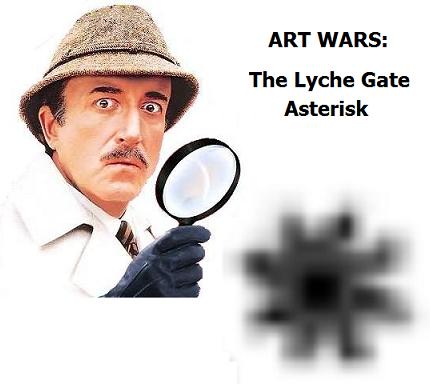
— and the March 2014 issue of the
Notices of the American Mathematical Society —
See as well Epiphany 2014 (Jan. 6) in this journal and the
March Notices on the Shaw prize —
"Established under the auspices of Run Run Shaw
in November 2002, the prize is managed and
administered by the Shaw Prize Foundation
based in Hong Kong."
Thursday, February 13, 2014
Plan 9
The final link in today's previous post leads to
a post whose own final link leads to…
Thursday, December 13, 2012
|
Fashion Week — The Conclusion
Winter’s Game*
Part I: Continued from January 20 — "Arising Heaven" —
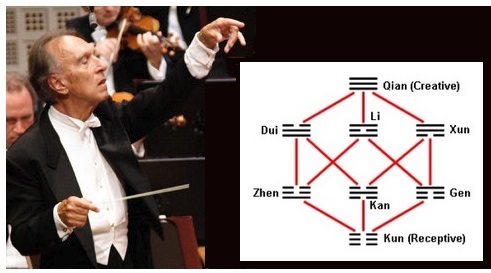
Part II: The Stars My Destination in this journal

Part III: Ender's Game —

* The title refers to a character, Rogue Winter, in Alfred Bester's
1981 novel The Deceivers .
Wednesday, February 12, 2014
But Seriously…
(A sequel to yesterday's Raiders of the Lost Music Box)
See, in this book, "Walsh Functions: A Digital Fourier Series,"
by Benjamin Jacoby (BYTE , September 1977). Some context:
Symmetry of Walsh Functions.
Tuesday, February 11, 2014
Everybody Comes to Rick’s
Continued from a post of January 28 —
In Memory of Pete Seeger.
The spiritual tribute link in that post suggests a review
of the following page from a pop-philosophy novel —
"Turn, turn, turn." — Pete Seeger. See also this morning's news.
Monday, February 10, 2014
Mystery Box III: Inside, Outside
(Continued from Mystery Box, Feb. 4, and Mystery Box II, Feb. 5.)
The Box

Inside the Box
Outside the Box
For the connection of the inside notation to the outside geometry,
see Desargues via Galois.
(For a related connection to curves and surfaces in the outside
geometry, see Hudson's classic Kummer's Quartic Surface and
Rosenhain and Göpel Tetrads in PG(3,2).)
Sunday, February 9, 2014
Sermon
A New York Times Sunday Magazine article today
about Reek Sunday (the last Sunday in July) suggests
a review of that Sunday last year, and hence also of
a related post from the Feast of the Transfiguration
nine days later.
Sunday School
The late mathematics educator Zoltan Dienes in 2002 published
an article containing the following cryptic confession —
"Nowhere will I give away how I stole these patterns
from the mathematician's secret closet."
Some of the patterns he may have been referring to were
hardly secret. See a website recorded in the Internet Archive
on the Feast of St. Nicholas, 2000.
Green Night
See “Babbled” in this journal and …
Update of 3:15 AM ET —
Suggestions for Terry Gilliam, director of The Zero Theorem and Brazil —
See posts of April 26, 2013, and of February 2, 2014, as well as
a note from the São Paulo Symphony Orchestra.
Saturday, February 8, 2014
The Village
From this journal on Jan. 26, 2009 —
See also "Strip Mathematics," by Zoltan Dienes —

This illustration may have first appeared in Dienes's
"Mathematical fun without numbers, letters,
formulae or equations, Part I,"
The New Zealand Mathematics Magazine,
Vol 39, no.1. (May 2002)*
Material related to New Zealand —
See January 29, 2003 in this journal.
Material related to mathematics (without "fun") —
The Representation of Minus One.
General context —
Bester's The Deceivers in this journal.
* Update of 5:48 PM ET Feb. 8, 2014 — From that publication —
"Nowhere will I give away how I stole these patterns
from the mathematician's secret closet." — Zoltan Dienes
A Little Like
"Olympic opening ceremonies are a little like
a Match.com first date…."
— Alessandra Stanley, page D4 of the New York
edition of this morning's print NY Times
The late poet Rubén Darío, who died on Feb. 6, 1916—
"The snow-white Olympic swan …
preens his eucharistic wing"
The late poet Maxine Kumin, who died on Feb. 6, 2014—
Thursday, February 6, 2014
The Representation of Minus One
For the late mathematics educator Zoltan Dienes.
“There comes a time when the learner has identified
the abstract content of a number of different games
and is practically crying out for some sort of picture
by means of which to represent that which has been
gleaned as the common core of the various activities.”
— Article by “Melanie” at Zoltan Dienes’s website
Dienes reportedly died at 97 on Jan. 11, 2014.
From this journal on that date —
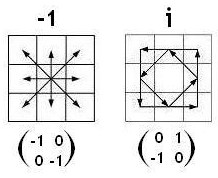
A star figure and the Galois quaternion.
The square root of the former is the latter.
Update of 5:01 PM ET Feb. 6, 2014 —
An illustration by Dienes related to the diamond theorem —
See also the above 15 images in …
… and versions of the 4×4 coordinatization in The 4×4 Relativity Problem
(Jan. 17, 2014).
Wednesday, February 5, 2014
Mystery Box II
Continued from previous post and from Sept. 8, 2009.

Examination of the box's contents does not solve
the contents' real mystery. That requires knowledge
of the non-Euclidean geometry of Galois space.
In this case, without that knowledge, prattle (as in
today's online New York Times ) about creativity and
"thinking outside the box" is pointless.
Tuesday, February 4, 2014
Monday, February 3, 2014
Occupy Wall
Moss on the Wall (Continued)
Tom Cruise at the Vatican in Mission: Impossible III (2006) —
Starring Tom Cruise as Ezekiel Moss, "a mysterious drifter
with the divine ability to channel and physically inhabit
the spirits of the dead."
— The quote is from "Philip Seymour Hoffman
Project 'Ezekiel Moss' Will Not Be Sold In Berlin*"
at Deadline.com.
See also Hereafter + Damon in this journal, as well as
the upload date for the above clip: Oct. 6, 2011.
* Here "Berlin" refers to the upcoming
European Film Market, Feb. 6-14
Designs
This journal a year ago yesterday—
“Some designs work subtly.
Others are successful through sheer force.”

Sunday, February 2, 2014
Say It With Flowers
The title is a reference to the Jan. 4 post "Learning Guide."
Update of 7:59 PM ET Feb. 2 —
"… they entered the apartment together around 11:30 a.m."
— NY Times today on the discovery of Hoffman's body.
Synchronicity: Today's 11 AM (ET) Log24 post, as well as
a 2007 Hoffman film involving drugs, jewels, and a planned
escape to Brazil —
"May you be in heaven a full half-hour
before the devil knows you're dead ."
Diamond Theory Roulette
A ReCode Project program from Radamés Ajna of São Paulo —
At the program's webpage, click the image to
generate random permutations of rows, columns,
and quadrants. Note the resulting image's ordinary
or color-interchange symmetry.

|
A Shadow for Groundhog Day
Alec Baldwin as Lamont Cranston
Compare and contrast with the psychoanalyst in Remembrance
(January 27, 2014).
Saturday, February 1, 2014
ART WARS (continued)
A sequel to Friday afternoon's Diamond Star
Diamond Star —

|
A doodle from this year's [2012’s] Feast of the Epiphany—
A doodle based on today's previous post and on
|
Context — All posts tagged "Eden."
But Is It Art?

See a New York Times story on some art from Delft.
This may be read as a prequel (online Jan. 30) to
two Log24 posts — yesterday's Diamond Star and
this morning's Delft Version.


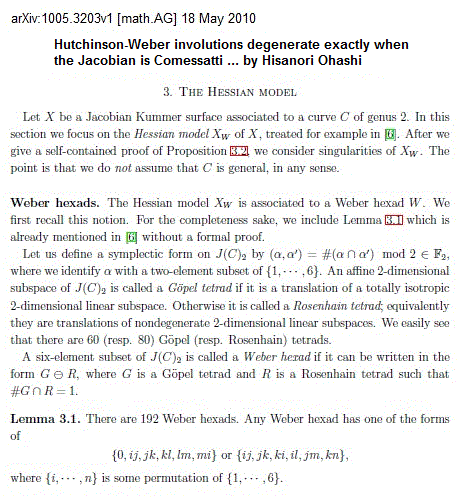



















































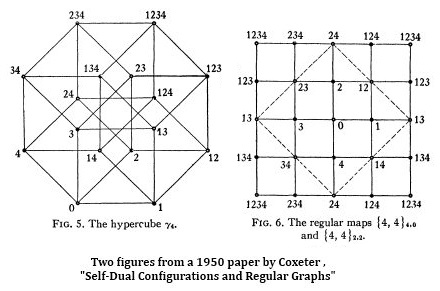

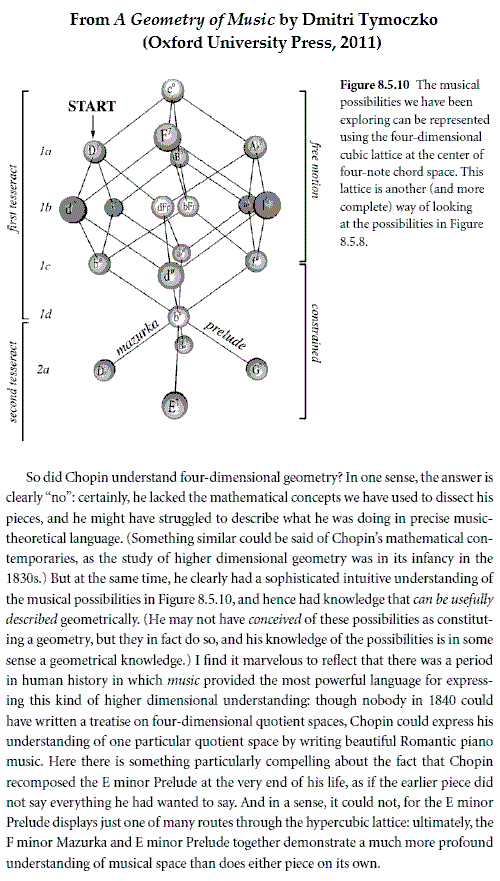












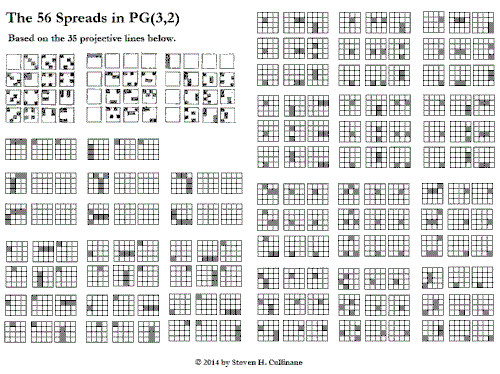







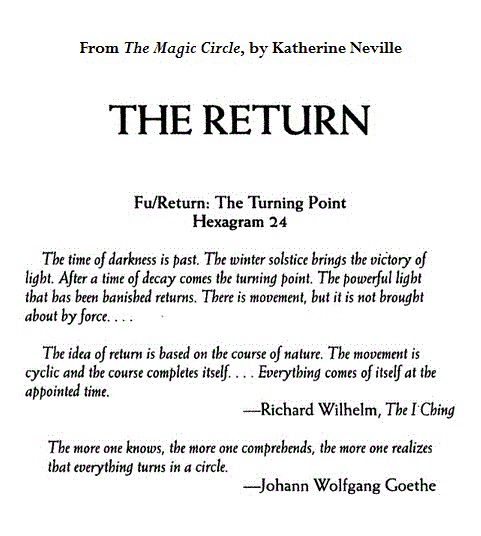










 .
.








